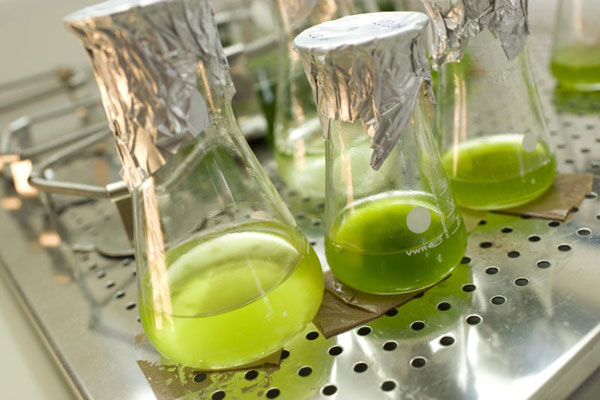Detecting algae can 'eat' cellulose
The flowers need water and light to grow. Even children know that plants use sunlight to gather energy from soil and water.
Members of Professor Biology's research group Dr. Olaf Kruse discovered a breakthrough discovery that one of the plants has another way to do this. They confirmed for the first time a plant, green algae Chlamydomonas reinhardtii , not only involved in photosynthesis, but also has an alternative energy source: it can be extracted from other plants. This finding may also have a major impact on the future of bioenergy.
The research results were published online in Nature Communications yesterday, November 20.
So far, it is believed that worms, bacteria, and fungi can only digest plant cellulose and use it as a carbon source for their growth and survival. In contrast, plant species bind to photosynthesis of carbon dioxide, water, and light. In a series of experiments, Professor Dr. Olaf Kruse and his team transplanted the green microalgae Chlamydomonas reinhardtii in a low carbon dioxide environment and observed that when faced with a lack of CO2, the This single-celled plant can draw energy from its cellulose 'neighbor' plant instead.

Algae produce enzymes (also called celluloseza enzymes) that "digest" cellulose, breaking cellulose into smaller sugar particles. The sugar is then transported into cells and transformed into an energy source: algae can continue to grow.
'This is the first time such an act has been confirmed in a plant,' Professor Kruse said. 'Algae can digest cellulose, which contradicts every textbook. To a certain extent, what we are seeing is plants that eat plants'.
Currently, scientists are studying whether this mechanism also occurs in other algae. Preliminary results show that this mechanism only occurs in the algae mentioned above.
In the future, this 'new' ability of algae may also be of interest to produce bioenergy. Breaking down cellulose by biological means is one of the most important tasks in this area. Although large quantities of cellulose-containing waste are available, such as from harvest of crops, this amount of waste cannot be converted into biofuel in this form. Celluloseza enzymes must first break the material and process it.
Currently, these essential celluloseza enzymes are extracted from fungi, and these fungi need organic materials to grow. If in the future it is possible to obtain the enzyme cellulose from algae, there may be no need for organic material to grow mushrooms. Then, even if algae are confirmed to be able to use alternative nutrients, water and light are enough for them to grow under normal conditions.
- Detecting algae-like fossils in meteorites
- Chinese sea is covered with algae covering nearly 29,000 km2
- The American way of forecasting, detecting and measuring red tide toxins
- Giant algae surrounds Antarctica
- Discover algae fraud
- Hard biodegradable yarn like steel made of wood cellulose
- Video: The threat of blue algae blooms in the rivers and lakes
- Giant green algae blooms
- Producing starch from cellulose
- Killing algae in a snap appearing on six French beaches
- Styrofoam sponges handle oil spills
- Poisonous algae attack the US coast
 Why do potatoes have eyes?
Why do potatoes have eyes? 'Tragedy' the world's largest carnivorous life: Death becomes ... public toilet
'Tragedy' the world's largest carnivorous life: Death becomes ... public toilet Tomatoes were once considered 'poisonous' for 200 years
Tomatoes were once considered 'poisonous' for 200 years Detecting microscopic parasites on human face
Detecting microscopic parasites on human face Shocked with half a billion year old mummy intact as if it died yesterday in China
Shocked with half a billion year old mummy intact as if it died yesterday in China  Scientists have just created a creature that can live without breathing
Scientists have just created a creature that can live without breathing  Strangely the snow turns watermelon color and sweet like sugar in summer
Strangely the snow turns watermelon color and sweet like sugar in summer  Algae can survive in a Mars-like environment
Algae can survive in a Mars-like environment  Climate change causes snow in Antarctica to turn green
Climate change causes snow in Antarctica to turn green  Toxic algae blooming on the Arab Sea
Toxic algae blooming on the Arab Sea 